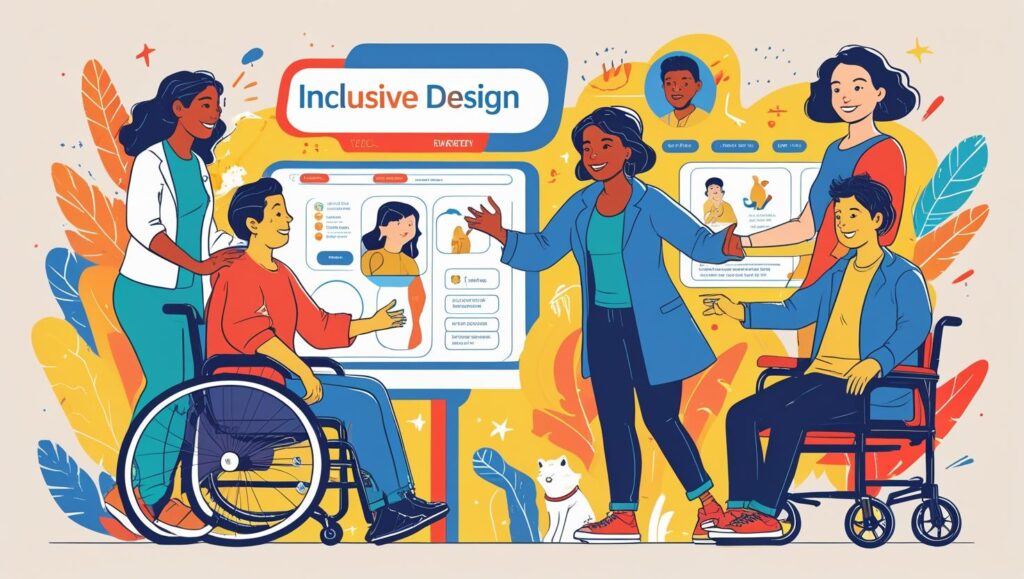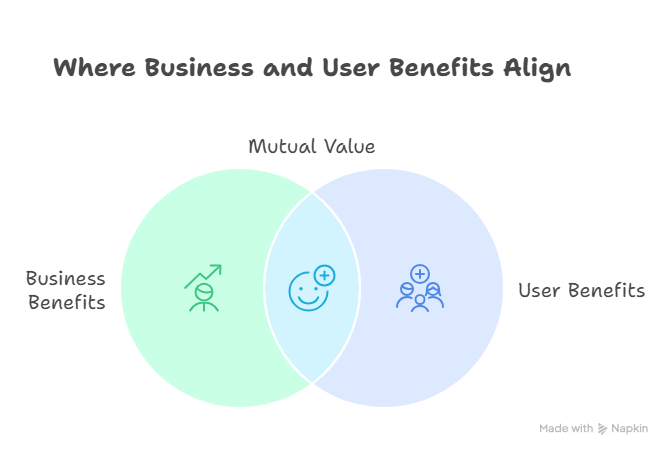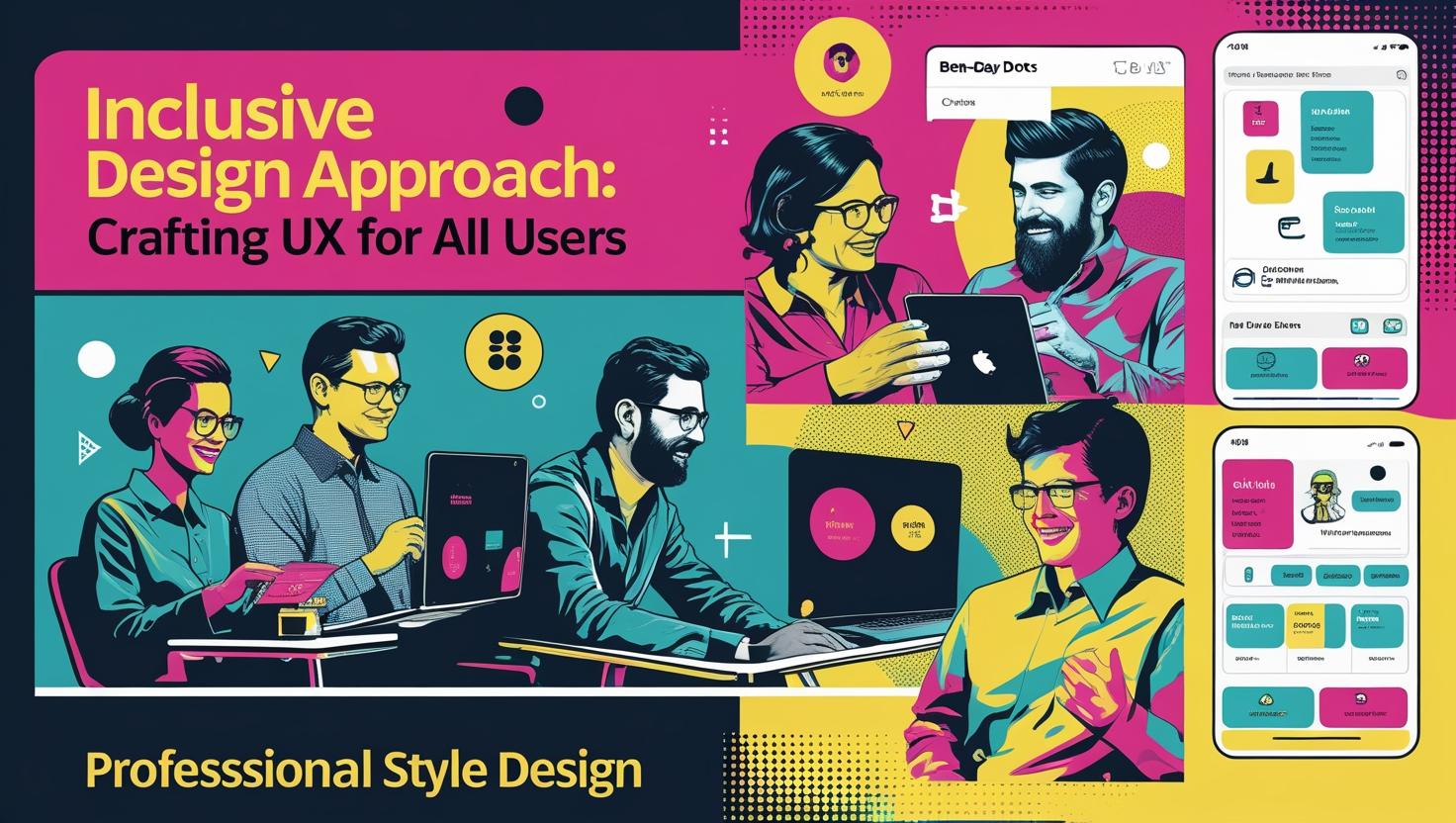Embracing an inclusive design approach is transforming how designers address marginalized user needs, ensuring user-centered design and accessibility in UX. By prioritizing designing for diverse users, this approach creates experiences that resonate with a broader audience. This article explores the principles of inclusive design, its benefits, and practical strategies for implementation. For expert guidance on enhancing your digital presence, visit Webie’s SEO services.
What Is an Inclusive Design Approach?
An inclusive design approach focuses on creating products that are accessible and usable for everyone, including those with marginalized user needs. Unlike traditional design, which often caters to a mainstream audience, this method emphasizes user-centered design by considering diverse abilities, backgrounds, and contexts. By integrating accessibility in UX, designers ensure that products are intuitive and equitable, aligning with the goal of designing for diverse users.
Why Inclusive Design Matters
The importance of an inclusive design approach lies in its ability to broaden a product’s reach and impact. By addressing marginalized user needs, businesses can enhance user satisfaction and loyalty. Here’s why this approach is critical:
- Wider Audience Reach: Inclusive designs accommodate users with disabilities, cultural differences, or unique contexts.
- Improved User Experience: User-centered design prioritizes usability, making products more intuitive for all.
- Ethical Responsibility: Accessibility in UX ensures no one is excluded, fostering equity in digital spaces.
For insights on avoiding common UX pitfalls, check out BozzaBench’s podcast on design specification mistakes.

Challenges in Designing for Diverse Users
While the inclusive design approach is powerful, it comes with challenges. Designers must navigate complex marginalized user needs, such as varying accessibility requirements or cultural nuances. Additionally, balancing functionality with inclusivity can strain resources. However, overcoming these hurdles is essential for creating meaningful user-centered design experiences that prioritize accessibility in UX.
Strategies for Implementing Inclusive Design
To adopt an inclusive design approach, designers can follow these actionable steps:
- Conduct User Research: Engage with diverse user groups to understand their unique needs and challenges.
- Incorporate Accessibility Standards: Use guidelines like WCAG to ensure accessibility in UX.
- Test with Real Users: Involve marginalized users in testing to validate design effectiveness.
- Iterate Continuously: Refine designs based on feedback to improve usability for all.
These strategies help designers achieve designing for diverse users while maintaining a user-centered design focus. For professional support in optimizing your digital projects, explore Webie.
Real-World Benefits of Inclusive Design
An inclusive design approach delivers tangible benefits for businesses and users alike:
- Enhanced Brand Reputation: Companies prioritizing accessibility in UX build trust and loyalty among diverse audiences.
- Increased Engagement: User-centered design improves metrics like time on site and user retention.
- Market Expansion: Designing for diverse users taps into underserved markets, driving growth.
For example, incorporating features like screen reader compatibility or multilingual options addresses marginalized user needs, making products more accessible and appealing.

Overcoming Common Pitfalls in Inclusive Design
To succeed with an inclusive design approach, designers must avoid common mistakes. Focusing solely on mainstream users or neglecting accessibility testing can undermine efforts. Additionally, assuming all users have similar needs can lead to exclusionary designs. By prioritizing marginalized user needs and committing to accessibility in UX, designers can create truly inclusive experiences.
For more on avoiding design errors, listen to BozzaBench’s podcast, where experts share tips for refining UX workflows.
How Businesses Can Start with Inclusive Design
To implement designing for diverse users, businesses should begin by auditing their current products for accessibility gaps. Tools like automated accessibility checkers or user feedback surveys can identify areas for improvement. Additionally, training teams on user-centered design principles ensures everyone understands the value of inclusivity.
Partnering with experts like Webie can streamline this process, helping businesses craft inclusive digital experiences that resonate with users. Regular testing and iteration are key to sustaining an inclusive design approach over time.
The Future of Inclusive Design
As digital landscapes evolve, the inclusive design approach will become increasingly vital. With growing awareness of marginalized user needs, companies that prioritize accessibility in UX will stand out. This shift not only enhances user experience but also aligns with global trends toward equity and inclusion. By designing for diverse users, businesses can future-proof their products and build stronger connections with their audiences.

Conclusion
An inclusive design approach is essential for creating user-centered design that addresses marginalized user needs and prioritizes accessibility in UX. By adopting strategies like user research and accessibility testing, designers can achieve designing for diverse users effectively. For expert support in enhancing your digital strategy, visit Webie. To explore more UX insights, tune into BozzaBench’s podcast on design specification mistakes and check out our SEO roadmap guide.



























Leave a Reply